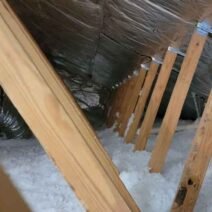Insurance claims can often be overwhelming, particularly when property owners are dealing with losses from fire, storm damage, water issues, or other disasters. Many policyholders are not fully aware of the details hidden in their coverage, and this lack of clarity can result in underpaid claims. Public adjusters step in as advocates for policyholders, carefully analyzing every aspect of the claim to ensure fair compensation. Their role is not only to interpret the policy but also to document damages and negotiate with insurance companies. We will explore how these professionals determine fair settlements, giving property owners insight into the process and why it matters for financial recovery. By breaking down their approach step by step, we can understand how they bring balance to an often one-sided process.
Steps Public Adjusters Use to Determine Fair Settlements
- Thorough Policy Review and Coverage Analysis
A fair settlement begins with a clear understanding of the insurance policy. Texas public insurance adjuster starts by carefully reviewing the policy language, exclusions, endorsements, and coverage limits. This step is crucial because many property owners may not be familiar with the technical terms and conditions written into their agreements. Adjusters analyze the type of coverage the policyholder has and identify the damages that should be included in the claim. They look for details such as replacement cost versus actual cash value, sub-limits on specific items, and time-sensitive provisions that could impact the payout. This meticulous review ensures that the insurance company’s interpretation does not shortchange the policyholder. By identifying every applicable coverage provision, public adjusters set the foundation for a settlement that reflects the true intent of the insurance contract. Without this careful evaluation, claimants could easily miss out on compensation they are entitled to receive.
- Accurate Damage Assessment and Documentation
Once the policy has been analyzed, the next step involves thoroughly documenting the damage. Public adjusters visit the property in person to conduct inspections that go beyond surface-level observations. They often use tools such as moisture meters, thermal imaging cameras, or drone technology to capture hidden damage. Detailed photographs, videos, and written reports are created to establish the full scope of the loss. In addition, they assess both structural damage and damage to contents within the property. This stage is particularly important because insurance companies may attempt to minimize claims by focusing only on visible damages. Public adjusters counter this by providing comprehensive documentation that cannot be easily disputed. By assembling strong evidence, they create a compelling case that shows the true impact of the disaster. This helps ensure that every legitimate expense is included in the claim, from repairs to replacements, leaving little room for undervaluation.
- Developing Accurate Repair and Replacement Estimates
Fair settlements also depend on accurate cost estimates for repair and replacement. Public adjusters work with contractors, engineers, and construction professionals to calculate the real-world costs of bringing the property back to its pre-loss condition. Instead of relying on generic estimates or insurance company software, they use current market data and local labor rates to produce reliable figures. This step ensures that the claim reflects actual costs rather than inflated or reduced numbers. For example, if a roof needs replacement, the adjuster considers not just the materials but also labor, disposal fees, permits, and any code upgrades required by law. This comprehensive approach prevents policyholders from facing unexpected out-of-pocket expenses later. By basing the settlement request on an accurate and detailed cost analysis, public adjusters provide insurance companies with documentation that supports the true financial impact of the loss. This creates a stronger negotiating position and increases the chances of a fair payout.
- Negotiating with Insurance Companies
Once the damages and repair estimates are prepared, public adjusters enter into negotiations with the insurance company. This stage requires persistence and strong communication skills, as insurers often try to limit their financial responsibility. Public adjusters present the documented evidence, cost estimates, and policy analysis in a way that clearly demonstrates why a higher settlement may be warranted. They handle back-and-forth discussions, rebuttals, and requests for additional information, saving policyholders from the stress of dealing directly with the insurer. Negotiations can be lengthy, but adjusters are trained to remain firm and detail-oriented, ensuring that no aspect of the claim is overlooked. Their goal is to reach a resolution that fully compensates the policyholder for their losses. By representing the claimant throughout these discussions, they level the playing field and prevent insurance companies from taking advantage of individuals who may not know how to challenge low offers effectively.
- Ensuring Compliance and Maximizing Recovery
The final step involves ensuring that the settlement complies with policy terms while maximizing the claimant’s recovery. Public adjusters verify that the insurance company honors the coverage provisions identified earlier and that all damages are properly accounted for in the payout. They also review the settlement documents to confirm accuracy and fairness before the policyholder accepts the payment. Additionally, they may assist in securing supplemental claims if new damages are discovered during the repair process or if costs exceed initial estimates. This ongoing involvement ensures that property owners are not left with unpaid bills or incomplete compensation. For many policyholders, this step provides peace of mind, as they can trust that the settlement reflects the true extent of their losses.
Public adjusters play an important role in determining fair settlements for property owners navigating the claims process. By carefully reviewing insurance policies, documenting every detail of the damage, preparing accurate cost estimates, and negotiating firmly with insurers, they bring balance to a system that often favors insurance companies. Their structured process ensures that claimants are not left with underpaid or overlooked losses, allowing them to move forward with the confidence that their recovery is fully supported. For property owners facing the stress of unexpected damage, understanding how public adjusters determine fair settlements can make a significant difference in financial recovery and peace of mind.








